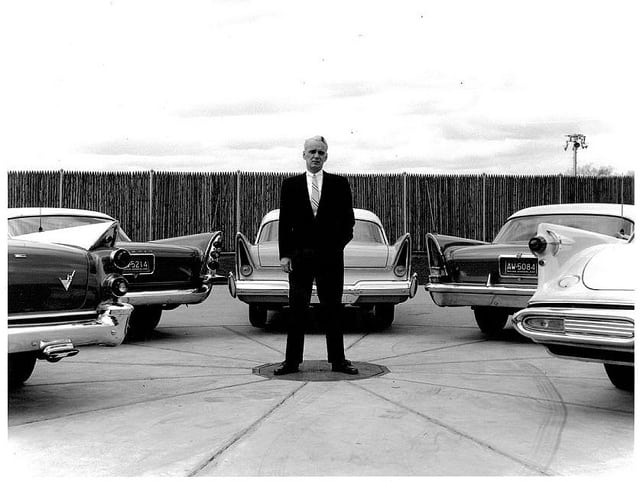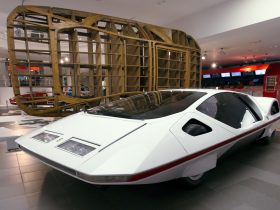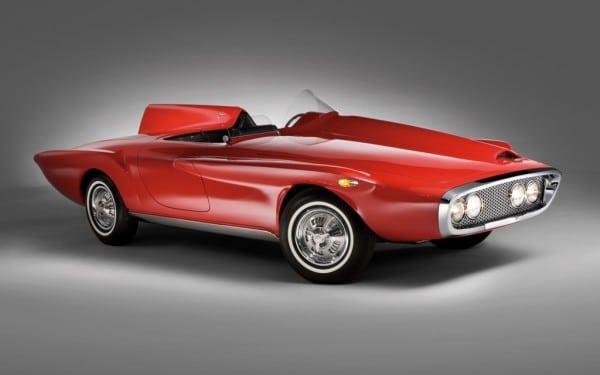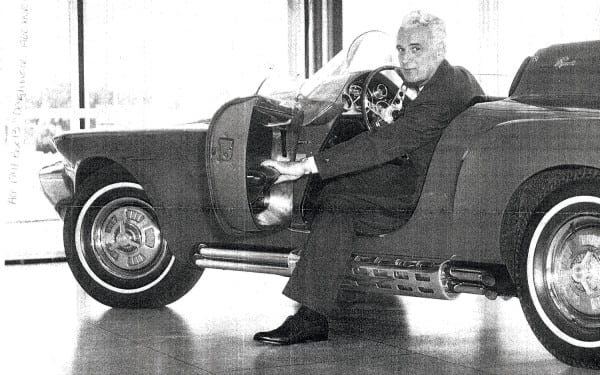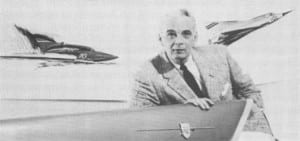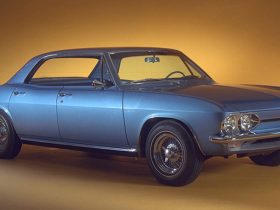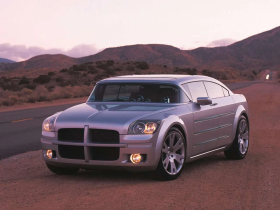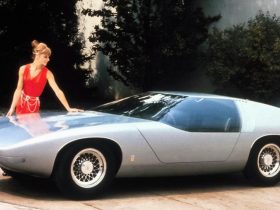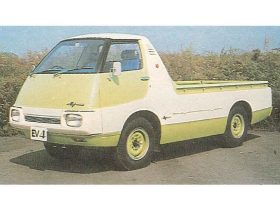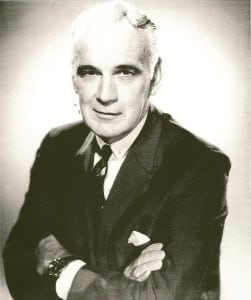 Today is the birthday of one of automotive’s most influential designers, Virgil Max Exner, Sr. – most commonly known as Virgil Exner or “Ex.” His design work at Chrysler and Studebaker made him a household name in the 1950s and 60s and he was instrumental in the popular “fin” look classics from that era sport.
Today is the birthday of one of automotive’s most influential designers, Virgil Max Exner, Sr. – most commonly known as Virgil Exner or “Ex.” His design work at Chrysler and Studebaker made him a household name in the 1950s and 60s and he was instrumental in the popular “fin” look classics from that era sport.
Virgil’s early life and career was marked by an interest in automobiles and art. He studied at the University of Notre Dame for two years, dropping out in 1928 when funds ran short. He took work in advertising and met his wife, Mildred, there. Virgil, Junior was born in 1933 at about the same time Exner was promoted to a major project involving hand-drawn advertisements for the Studebaker pickup truck.
Virgil At Studebaker
Exner persisted in trying to get into automotive design and used his work for Studebaker’s advertising to bolster his portfolio. This work lead him to getting hired at Loewy and Associates to work directly on Studebaker’s designs for both wartime models and their plans for post-war products. Exner remembered that time as being both thrilling, as he was on the ground floor of Studebaker, and trying, since his boss rarely noticed his work. With the encouragement of Roy Cole, VP of Engineering at Studebaker, Exner worked at home, privately, on alternative designs for Studebaker. Virgil didn’t know this, but Cole was privy to the shaky relationship between the design studio and the carmaker.
When that relationship fell apart, Exner left Loewy and was hired directly by Studebaker. He was directly involved in the design of several of the company’s post-war vehicles, including receiving later credit for the design of the iconic 1947 Studebaker Starlight coupe (his name is the only name on the design’s patent). Bad feelings at the time, however, lead to Exner leaving Studebaker as Loewy returned to good graces. Exner’s champion, Cole, helped him with introductions to design departments at both Ford and Chrysler, however, leading to the growth of the legend once he was hired at Chrysler in 1949.
Becoming a Legend At Chrysler
In the Advanced Styling Group at Chrysler, Exner was partnered initially with Cliff Voss and Maury Baldwin as a team working directly with Luigi “Gigi” Segre of Ghia in Italy as part of the close relationship the two companies shared. The bond forged here lead to the instant-classics and iconic Chrysler-Ghia designs of the 1950s, many of which have appeared here as Coffee and a Concept showcases.
His early work at Chrysler was as a part of a team on several designs which he fought to begin changing, moving the company away from the outdated boxy designs they sported to a more sleek, modern, rounded look. The 1955 Imperial is considered the first Exner-centric design Chrysler rolled out to showrooms and his pivotal work on the 1957 300C changed automotive design for decades. By 1959, fins were in and Exner was the leading designer at Chrysler after being elected the first VP of Styling at Chrysler in 1957.
Exner was instrumental in several iconic Chrysler designs, including production models like the 1959 Dodge Custom Royal. When rumors hit Chrysler brass that General Motors’ Chevrolet brand was planning to significantly downsize cars, they wanted to stay ahead and ordered Exner, against his wishes, to downsize the Dodge and Plymouth lines in 1962. This change killed sales for the brands, leading to Virgil Exner’s firing as a scapegoat.
Freelance Career
Exner held on as a consultant, however, retaining his pension. He was replaced with Elwood Engel, who had left Ford a year earlier after his triumph with the 1961 Lincoln Continental.
For several years, Exner freelanced as a design consultant with many companies and was a part of his son, Virgil, Jr.’s work with Buehler Corporation where he designed watercraft. Virgil was also instrumental in the revival of Stutz with the Blackhawk in the 1970s.
He died on December 22, 1973 at age 64.


